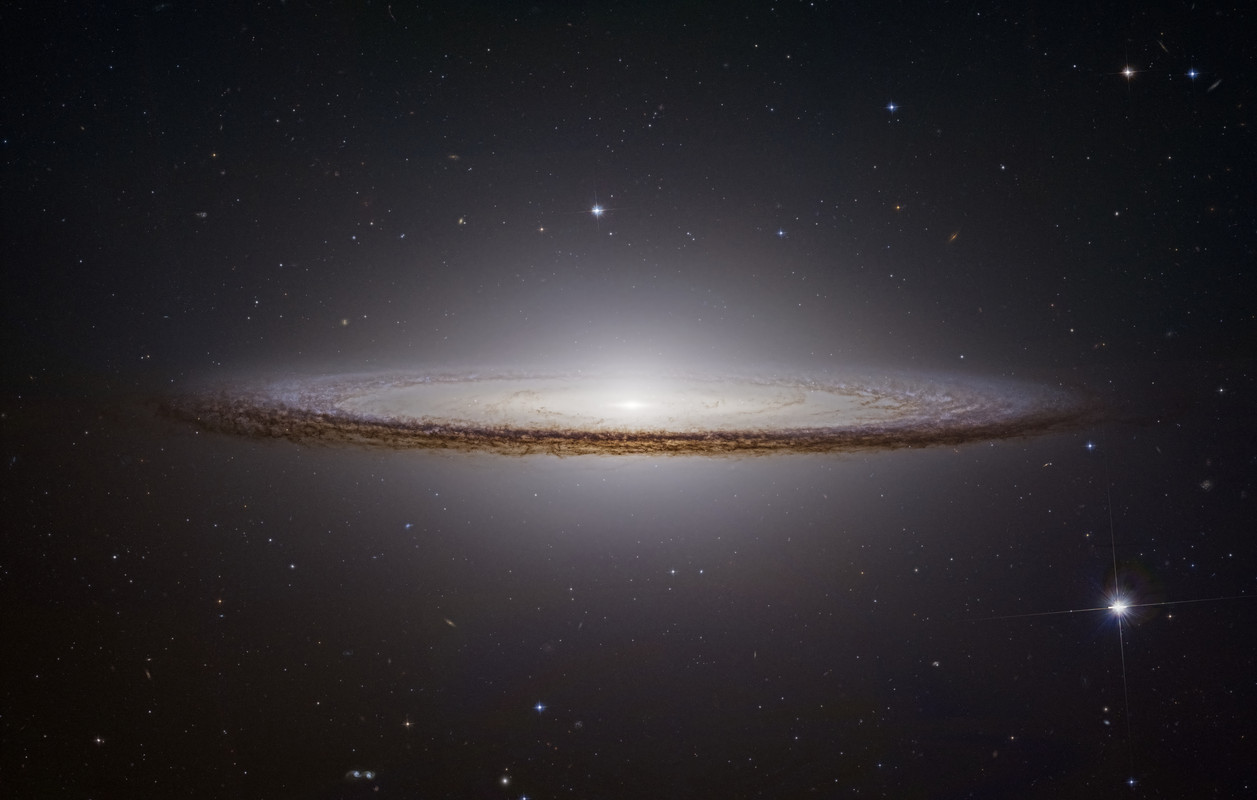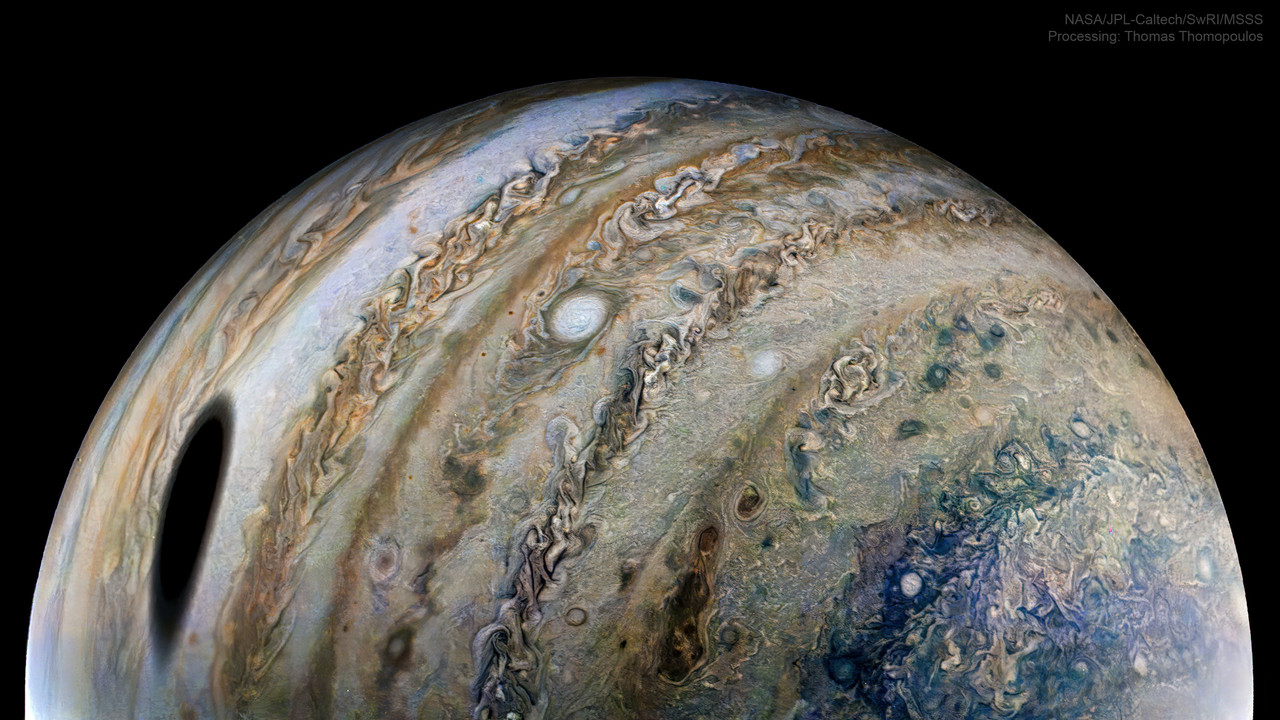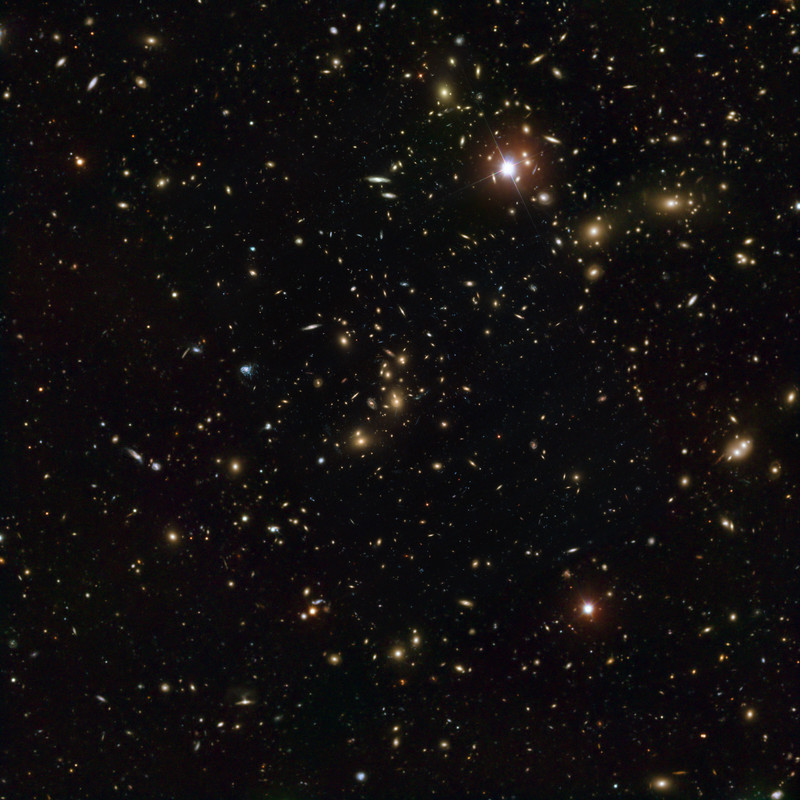Sorry the first two aren't larger.
Massive stars, abrasive winds, mountains of dust, and energetic light sculpt one of the largest and most picturesque regions of star formation in the Local Group of Galaxies. Known as N11, the region is visible on the upper right of many images of its home galaxy, the Milky Way neighbor known as the Large Magellanic Cloud (LMC). The featured image was taken for scientific purposes by the Hubble Space Telescope and reprocessed for artistry. Although the section imaged above is known as NGC 1763, the entire N11 emission nebula is second in LMC size only to the Tarantula Nebula. Compact globules of dark dust housing emerging young stars are also visible around the image. A recent study of variable stars in the LMC with Hubble has helped to recalibrate the distance scale of the observable universe, but resulted in a slightly different scale than found using the pervasive cosmic microwave background.

Spiral arms seem to swirl around the core of Messier 96 in this colorful, detailed portrait of a beautiful island universe. Of course M96 is a spiral galaxy, and counting the faint arms extending beyond the brighter central region it spans 100 thousand light-years or so. That's about the size of our own Milky Way. M96 is known to be 38 million light-years distant, a dominant member of the Leo I galaxy group. Background galaxies and smaller Leo I group members can be found by examining the picture. The most intriguing one is itself a spiral galaxy seen nearly edge on behind the outer spiral arm near the 1 o'clock position from center. Its bright central bulge cut by its own dark dust clouds, the edge-on background spiral appears to be about 1/5 the size of M96. If that background galaxy is similar in actual size to M96, then it would be about 5 times farther away.
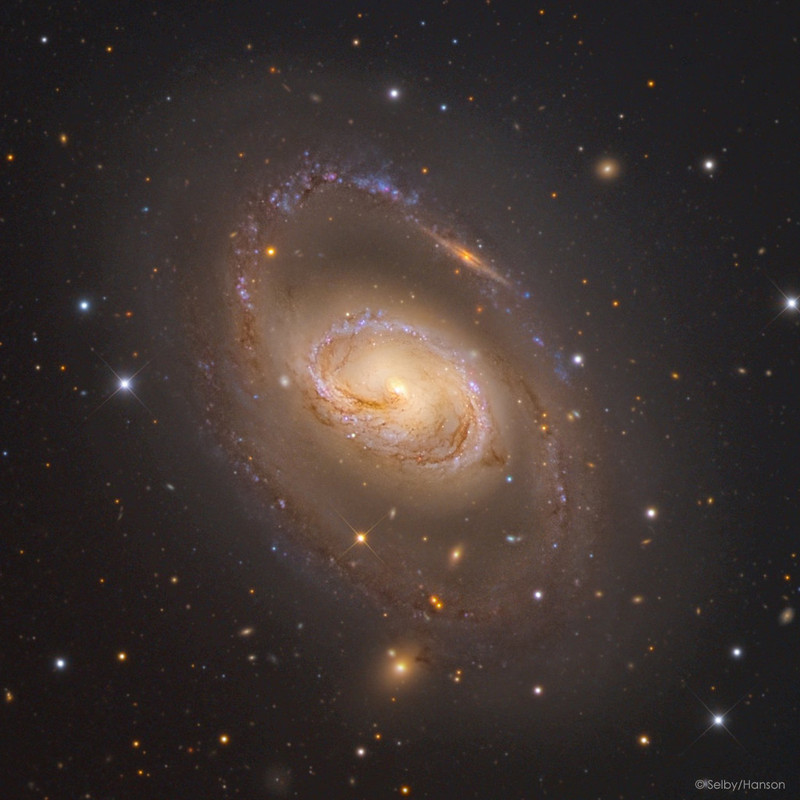
Jan. 12, 2022, Juno mission, Io and Europa.
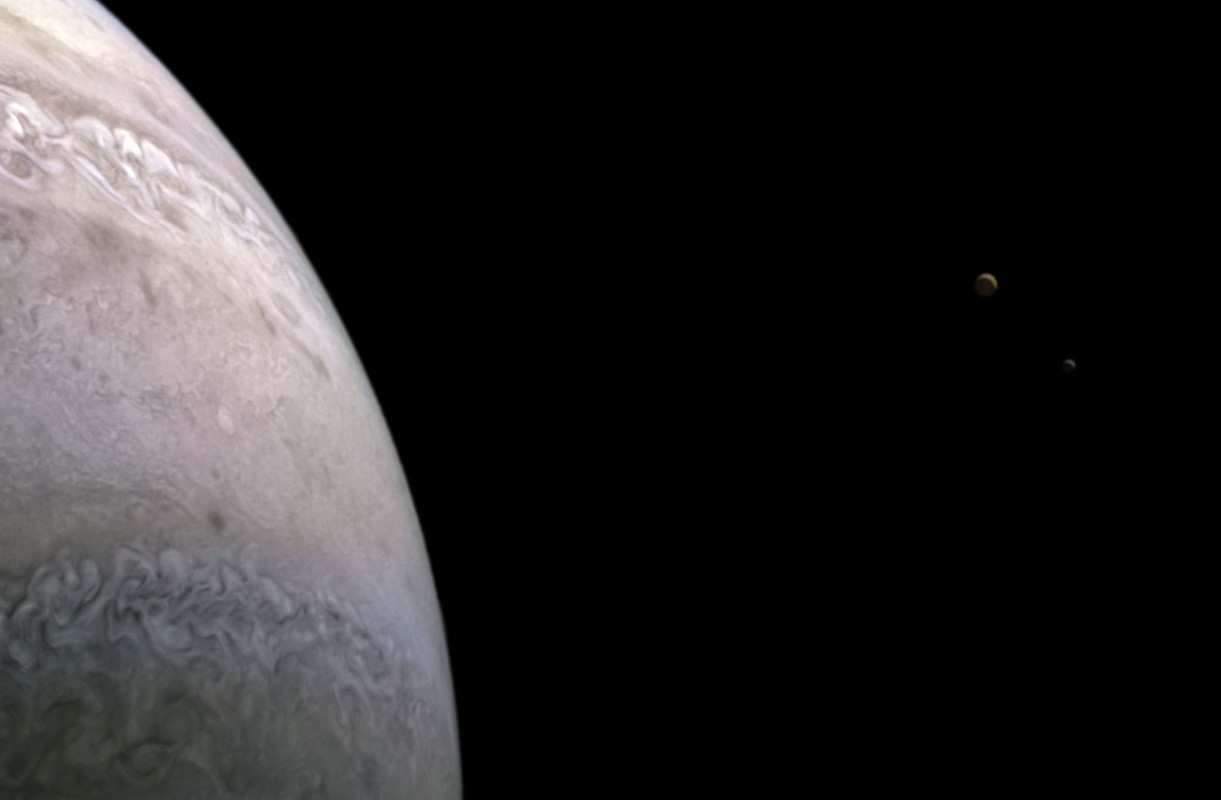
November 29, 2021, Juno mission

During its 33rd low pass over the cloud tops of Jupiter on April 15, 2021, NASA’s Juno spacecraft captured the intriguing evolution of a feature in the giant planet’s atmosphere known as “Clyde’s Spot.”
The feature is informally named for amateur astronomer Clyde Foster of Centurion, South Africa, who discovered it in 2020 using his own 14-inch telescope. On June 2, 2020, just two days after Foster’s initial discovery, Juno provided detailed observations of Clyde’s Spot (upper image), which scientists determined was a plume of cloud material erupting above the top layers of the Jovian atmosphere just southeast of Jupiter’s Great Red Spot, which is currently about 1.3 times as wide as Earth. These powerful convective outbreaks occasionally occur in this latitude band, known as the South Temperate Belt. The initial plume subsided quickly, and within a few weeks it was seen as a dark spot.
Many features in Jupiter’s highly dynamic atmosphere are short lived, but the April 2021 observation from the JunoCam instrument (lower image) revealed that nearly one year after its discovery, the remnant of Clyde’s Spot had not only drifted away from the Great Red Spot but had also developed into a complex structure that scientists call a folded filamentary region. This region is twice as big in latitude and three times as big in longitude as the original spot, and has the potential to persist for an extended period of time.
The upper image was taken on June 2, 2020, around 3:56 a.m. when the spacecraft was about 28,000 miles (45,000 kilometers) from Jupiter’s cloud tops. The lower image was taken on April 15, 2021, at 4:58 p.m. PDT (7:58 p.m. EDT). At the time, the spacecraft was about 16,800 miles (27,000 kilometers) from Jupiter’s cloud tops, at a latitude of about 30 degrees South.

During its 36th low pass over Jupiter, NASA’s Juno spacecraft captured this view of striking cloud bands and swirls in the giant planet’s mid-southern latitudes. The dark, circular vortex near the center of the image is a cyclone that spans roughly 250 miles (about 400 kilometers). The color at its center is likely to be the result of descending winds that cleared out upper-level clouds, revealing darker material below. The original image was taken on Sept. 2, 2021, at 4:09 p.m. PDT (7:09 p.m. EDT). At the time, the spacecraft was about 16,800 miles (about 27,000 kilometers) above Jupiter’s cloud tops, at a latitude of about 31 degrees south.

This visible light wide-field image of the region around the yellow hypergiant star IRAS 17163-3907 was created from photographs taken through blue, red and infrared filters and forming part of the Digitized Sky Survey 2. The star appears close to the center, indistinguishable from thousands of others. This very rich star field in the direction of the center of the Milky Way also features the blue ring-shaped planetary nebula NGC 6337 to the upper left of center, as well as several star clusters and some faint clouds of glowing gas. The field of view is approximately 2.9 degrees across.
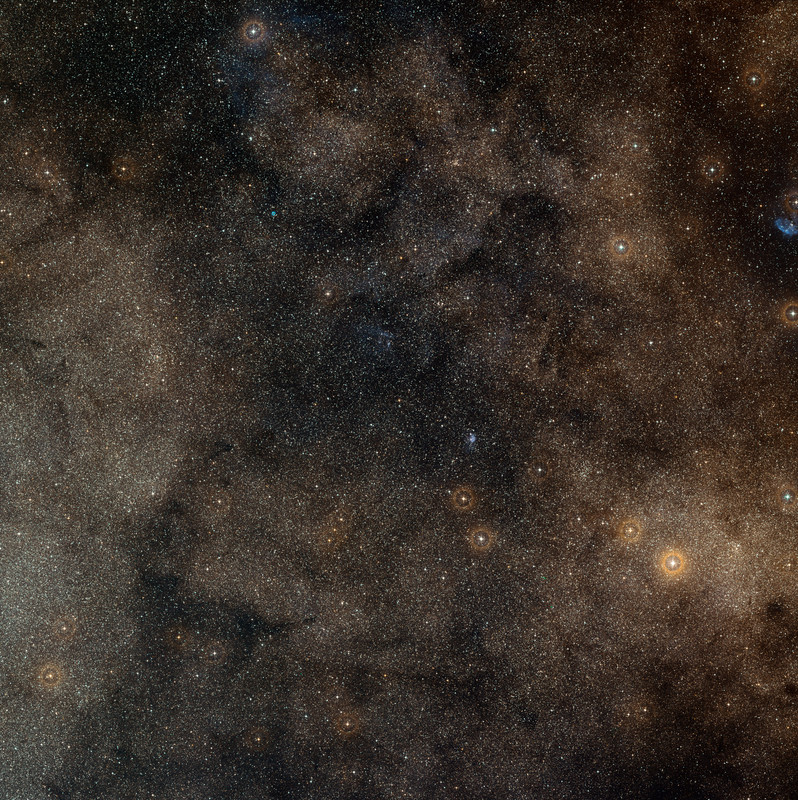
The Antennae Galaxies (also known as NGC 4038 and 4039) are a pair of distorted colliding spiral galaxies about 70 million light-years away, in the constellation of Corvus (The Crow). This view combines ALMA observations, made in two different wavelength ranges during the observatory’s early testing phase, with visible-light observations from the NASA/ESA Hubble Space Telescope.
The Hubble image is the sharpest view of this object ever taken and serves as the ultimate benchmark in terms of resolution. ALMA observes at much longer wavelengths which makes it much harder to obtain comparably sharp images. However, when the full ALMA array is completed its vision will be up to ten times sharper than Hubble.
Most of the ALMA test observations used to create this image were made using only twelve antennas working together — far fewer than will be used for the first science observations — and much closer together as well. Both of these factors make the new image just a taster of what is to come. As the observatory grows, the sharpness, speed, and quality of its observations will increase dramatically as more antennas become available and the array grows in size. This is nevertheless the best submillimetre-wavelength image ever taken of the Antennae Galaxies and opens a new window on the submillimeter Universe.
While visible light — shown here mainly in blue — reveals the newborn stars in the galaxies, ALMA’s view shows us something that cannot be seen at those wavelengths: the clouds of dense cold gas from which new stars form. The ALMA observations — shown here in red, pink and yellow — were made at specific wavelengths of millimeter and submillimeter light (ALMA bands 3 and 7), tuned to detect carbon monoxide molecules in the otherwise invisible hydrogen clouds, where new stars are forming.
Massive concentrations of gas are found not only in the hearts of the two galaxies but also in the chaotic region where they are colliding. Here, the total amount of gas is billions of times the mass of the Sun — a rich reservoir of material for future generations of stars. Observations like these will be vital in helping us understand how galaxy collisions can trigger the birth of new stars. This is just one example of how ALMA reveals parts of the Universe that cannot be seen with visible-light and infrared telescopes.

This image from the Wide Field Imager on the MPG/ESO 2.2-metre telescope shows the Running Chicken Nebula, a cloud of gas and newborn stars that lies around 6500 light-years away from us in the constellation of Centaurus (The Centaur). Officially called IC 2944, or the Lambda Centauri Nebula, its strange nickname comes from the bird-like shape of its brightest region. The star Lambda Centauri itself lies just outside the field of view.

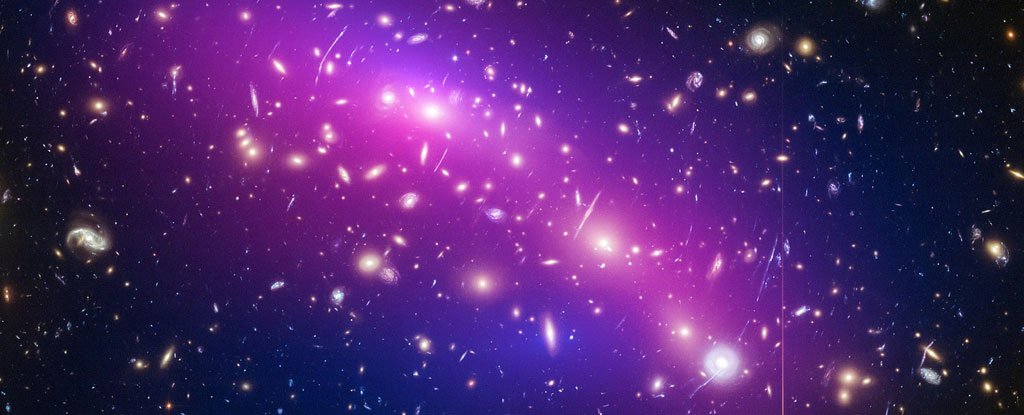






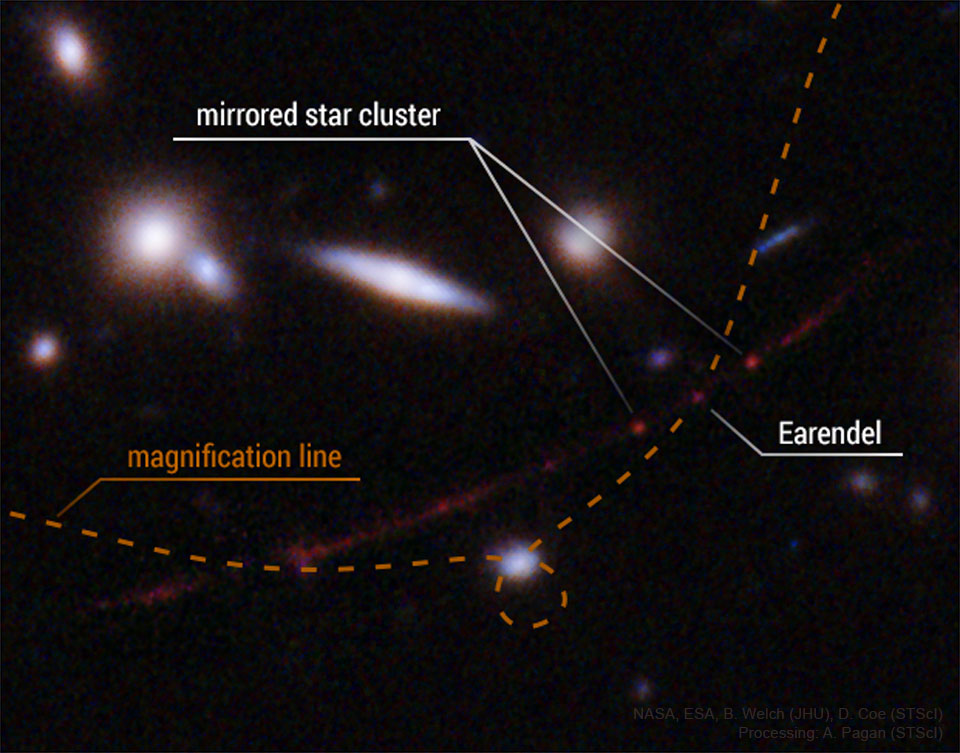
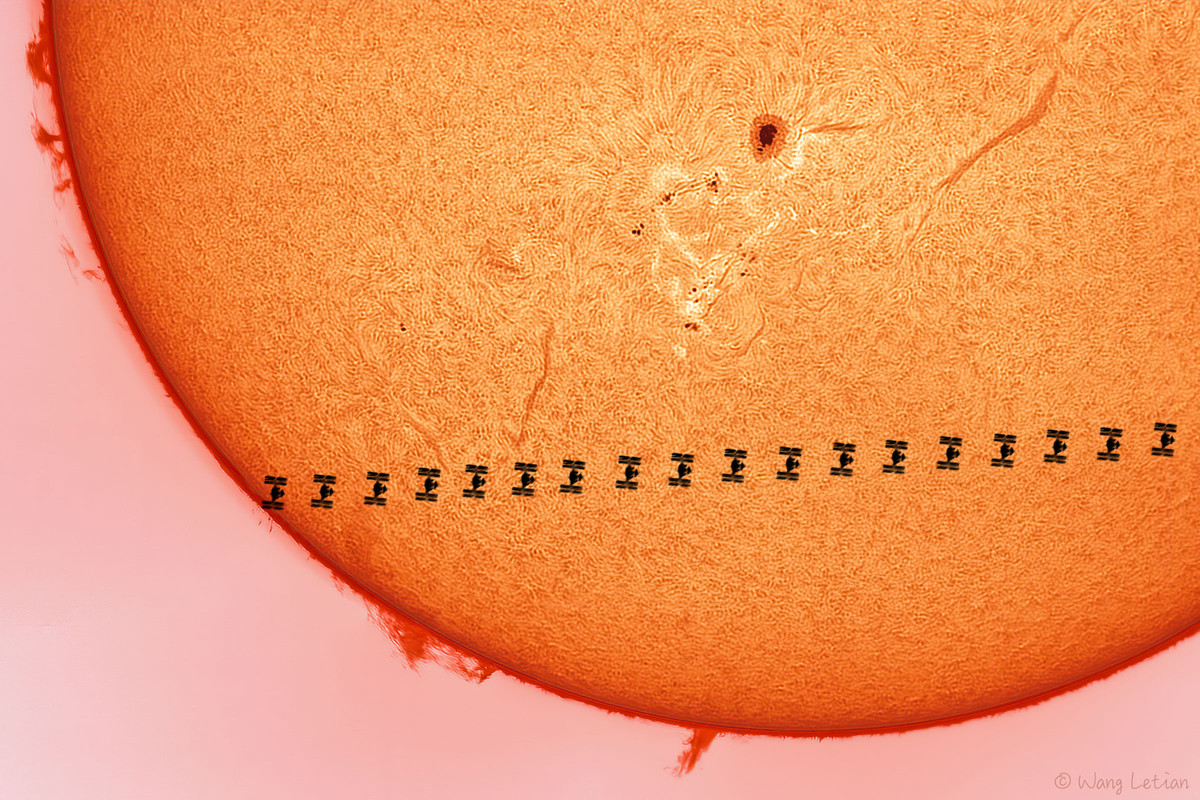
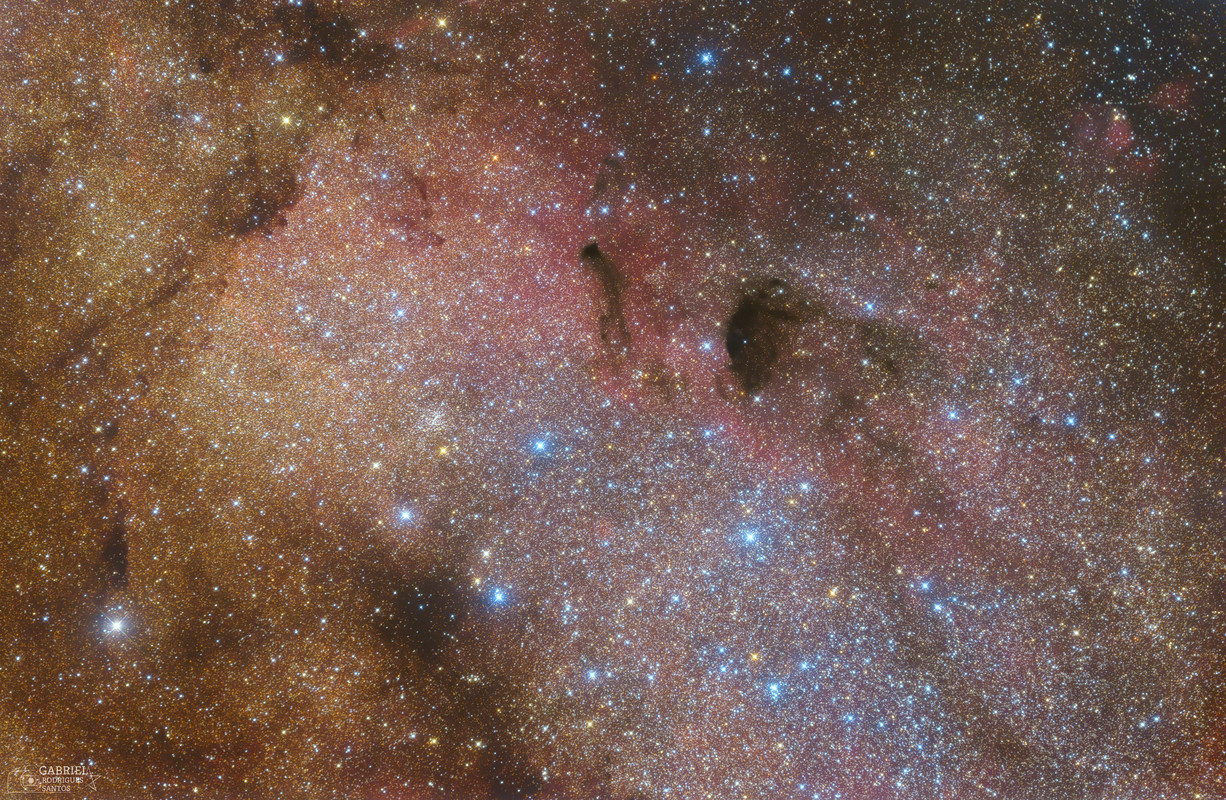



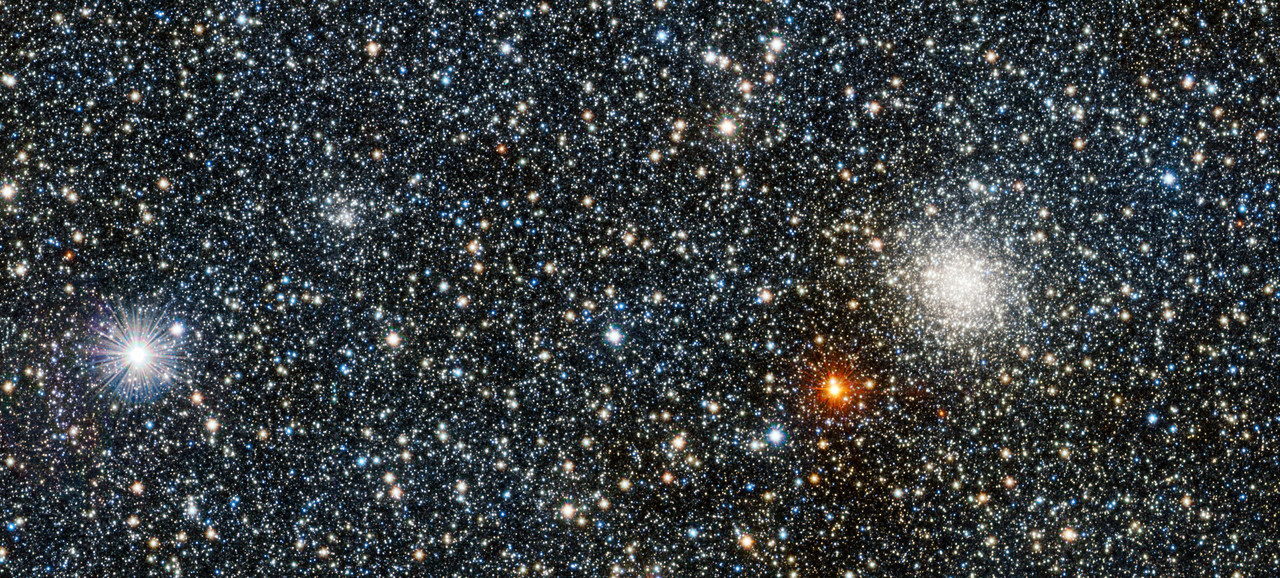


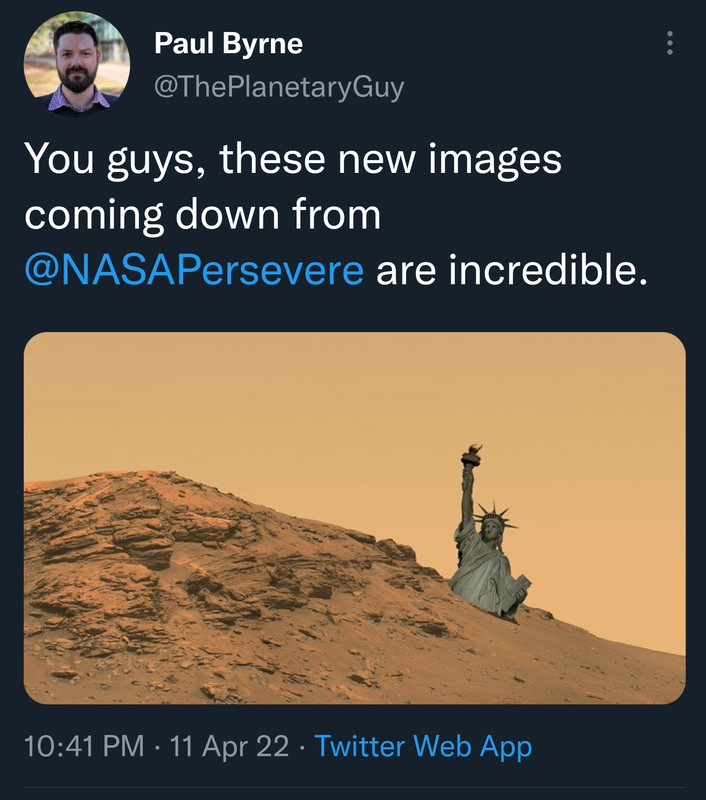














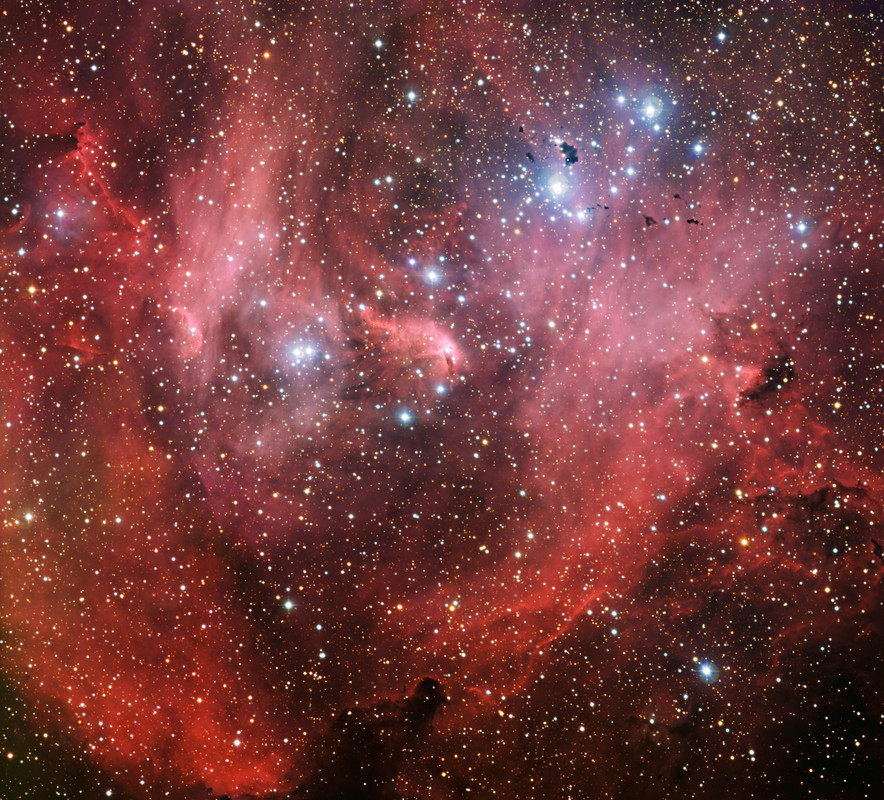

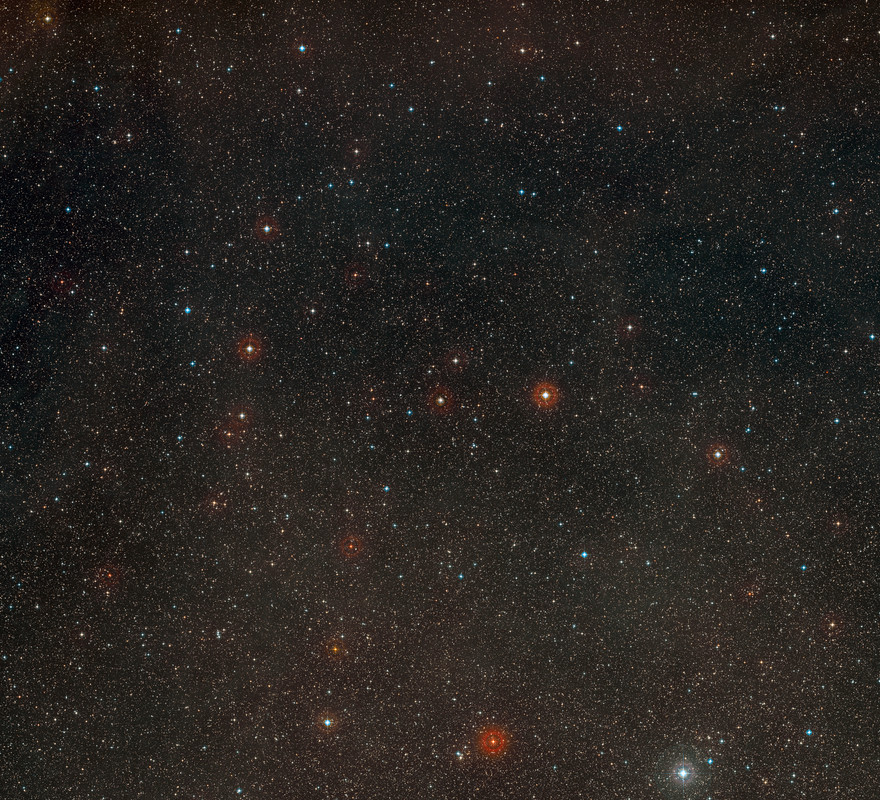
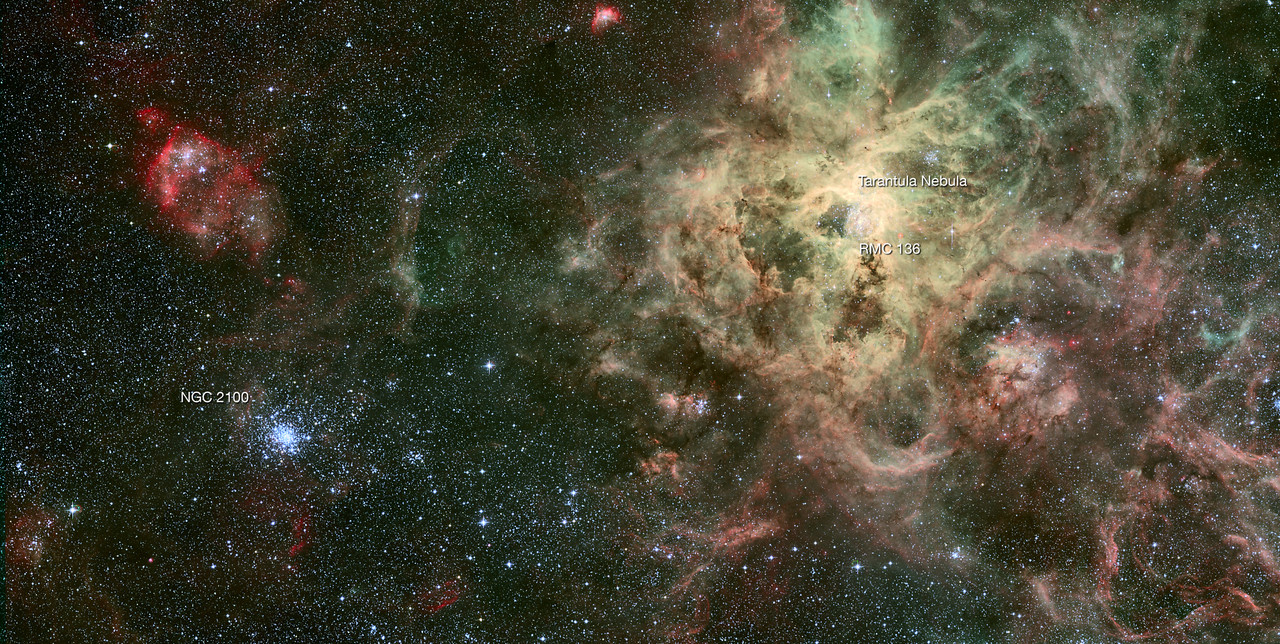



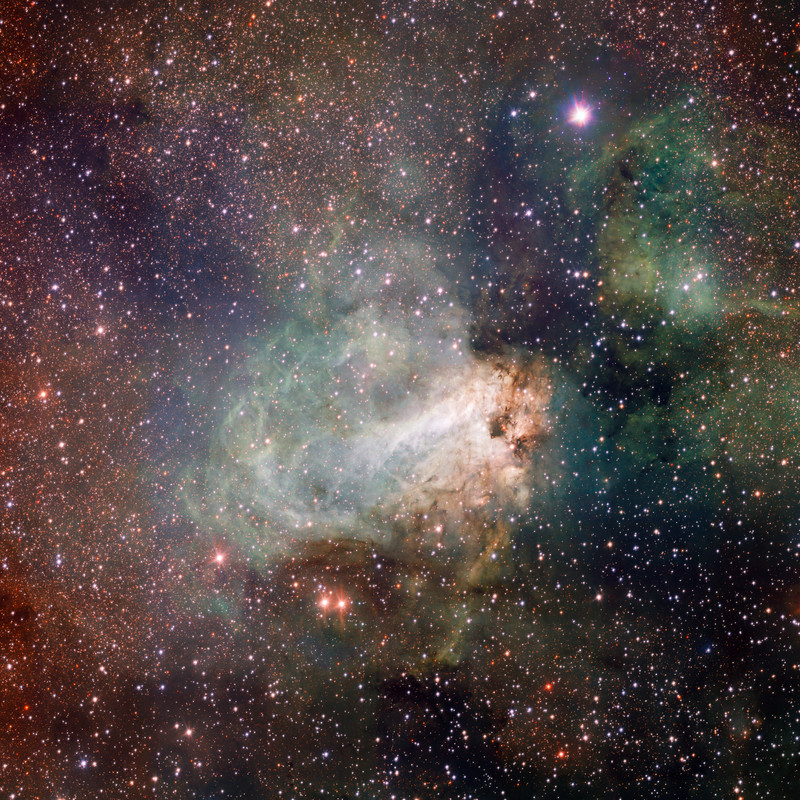



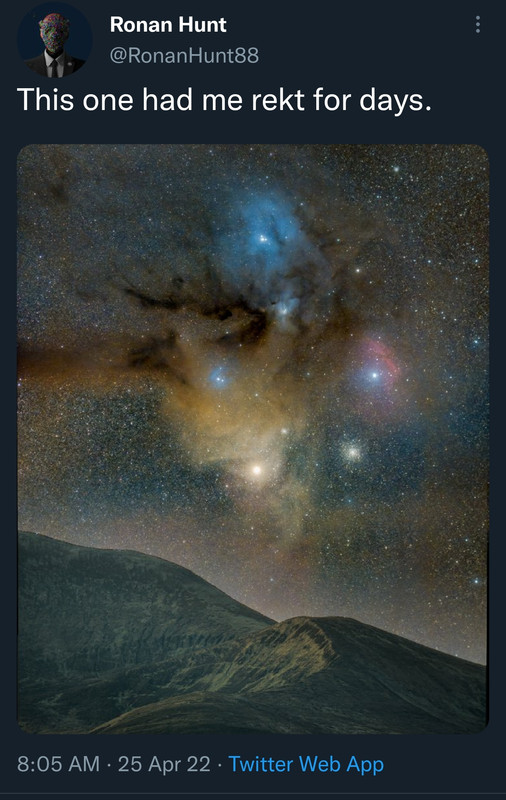


 .
.
